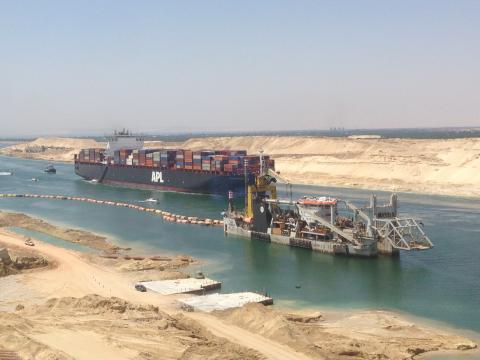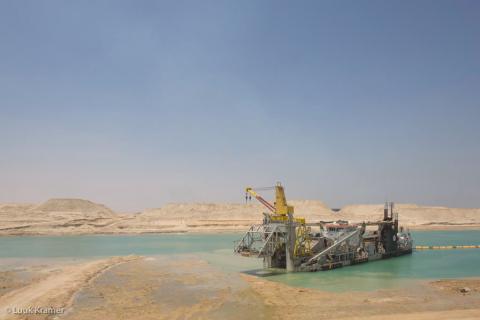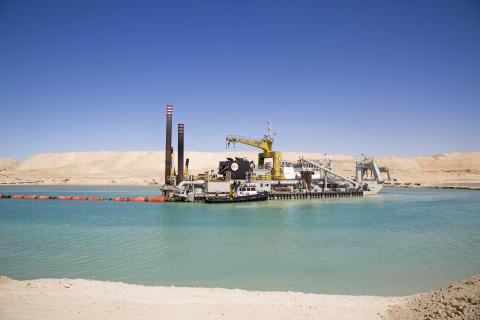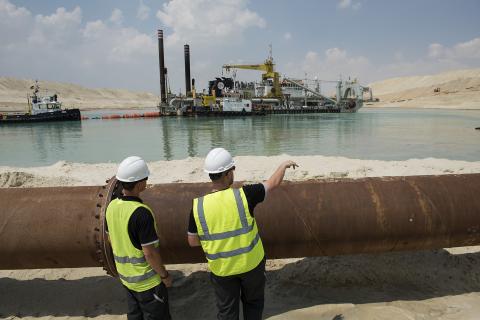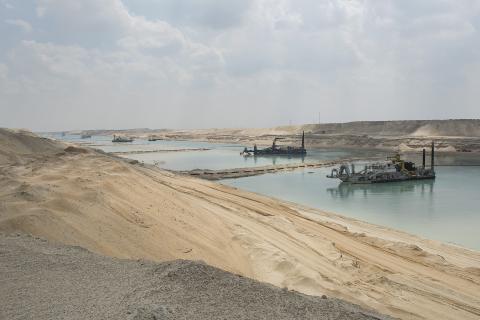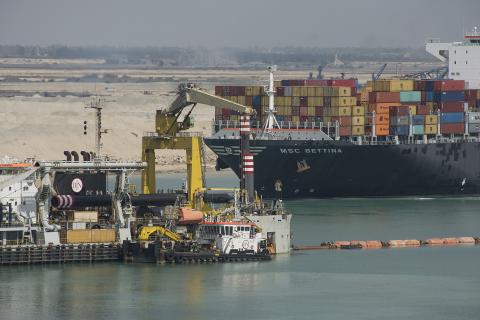The second Suez Canal was built because the first one was too narrow for two-way traffic of large cargo ships. At that time, about 50 ships passed through the canal per day, using convoys alternating between the two directions, which could cause waiting times of half a day or more.
In 2014, the Suez Canal Authority planned to expand the canal in order to increase the capacity of the canal and boost industrial activity in the region. They envisaged a second canal parallel to the first, covering a distance of about one-third of the total length and halfway along the route, allowing convoys to cross at that point, thus facilitating simultaneous passage in two directions.
Tight deadline, impressive fleet
This project's biggest challenge was its tight deadline. When the tender was submitted, one of the conditions was that the works would be completed within a year.
Due to the size of the project, this deadline could only be met if several dredging companies joined forces. The work was therefore awarded to two consortia, comprising a total of six dredging contractors, including Jan De Nul Group.
The second Suez Canal is about 150 metres wide and 24 metres deep and required a total of 250 million m³ of material to be dredged. The consortium in which Jan De Nul Group participated dredged 200 million m³ of that total amount. Jan De Nul Group deployed seven cutter suction dredgers for this project: J.F.J. De Nul, Hondius, Kaerius, Fernão de Magalhães, Ibn Battuta, Leonardo de Vinci and Zheng He.
The canal expansion was completed as planned on 6 August 2015, in time for the inauguration.

